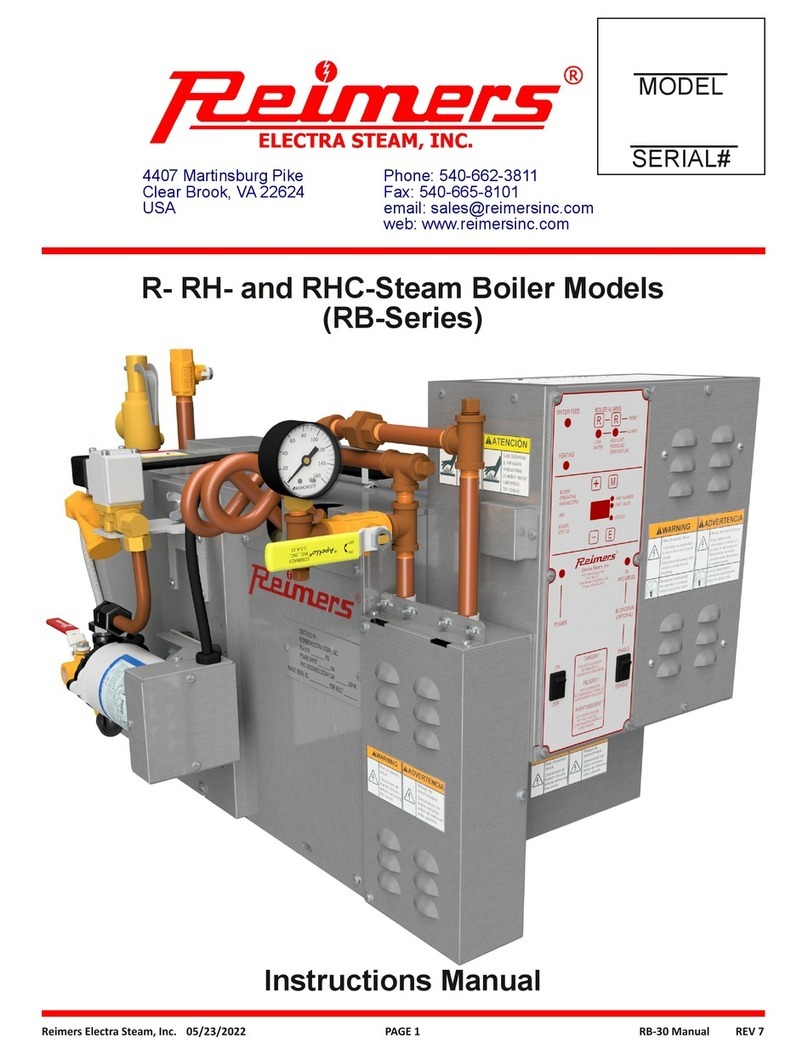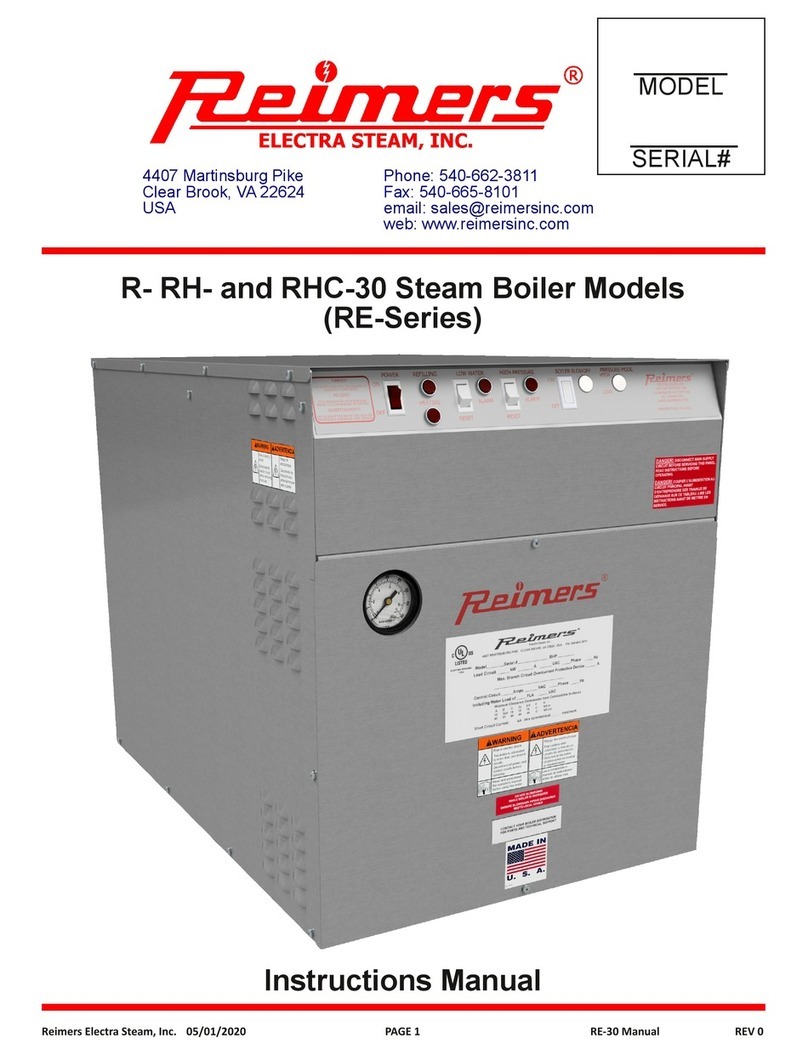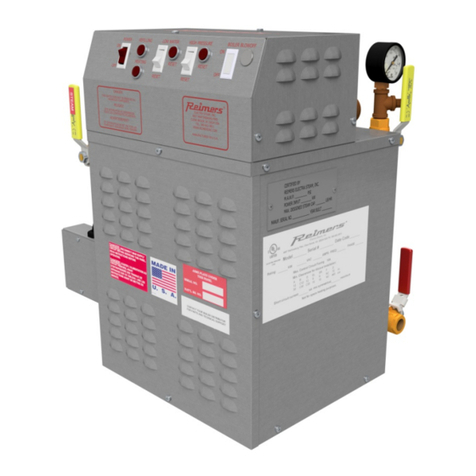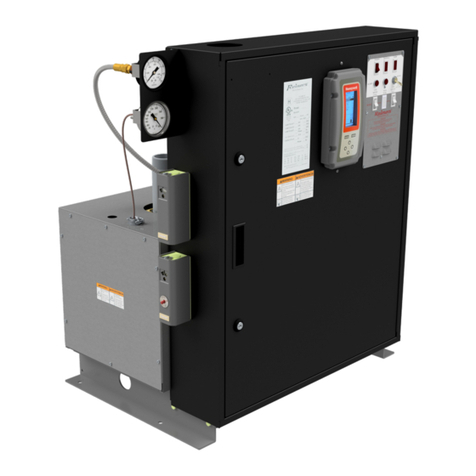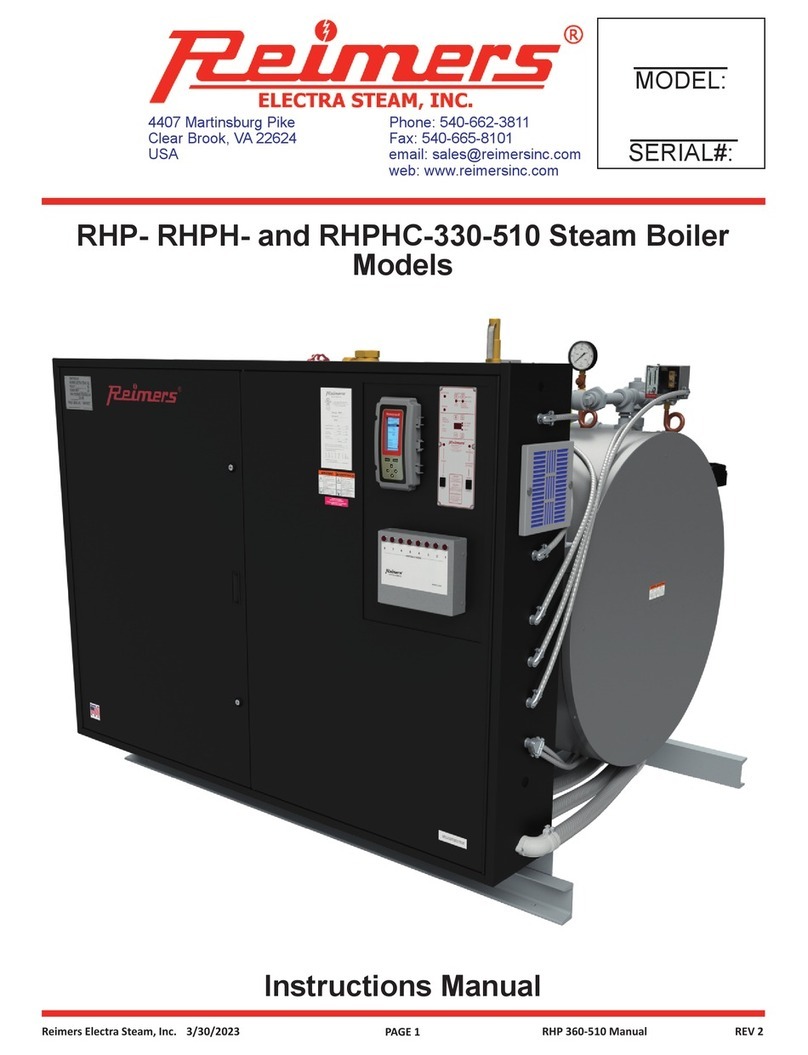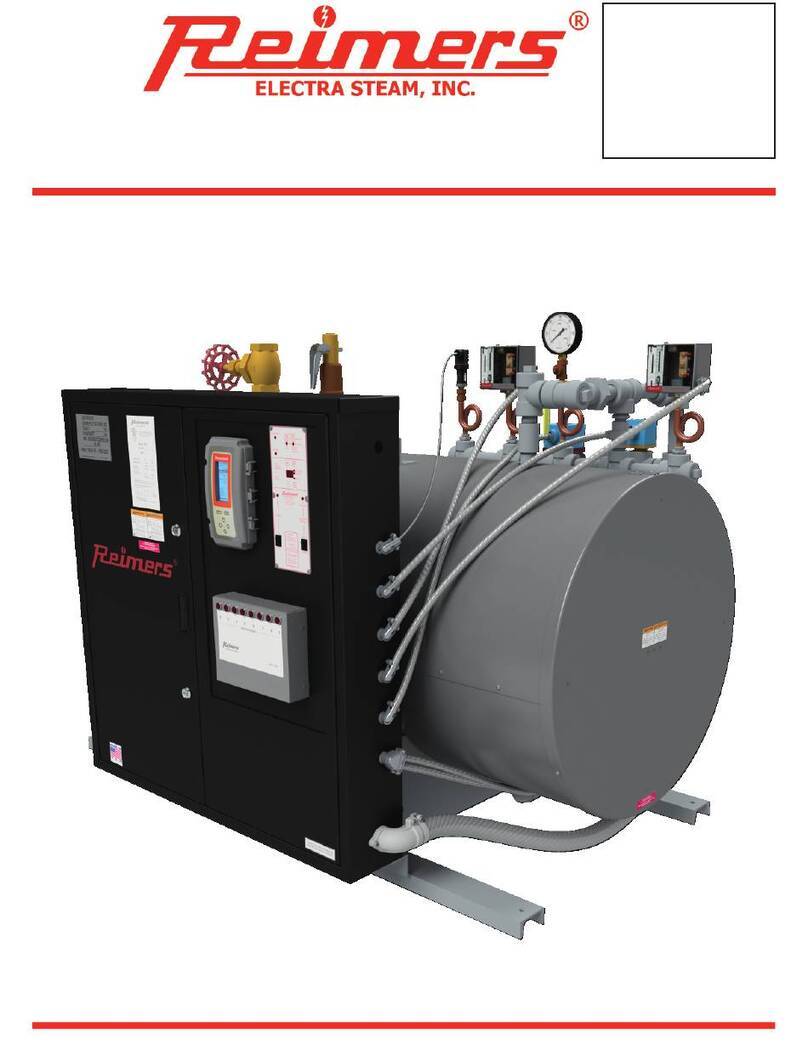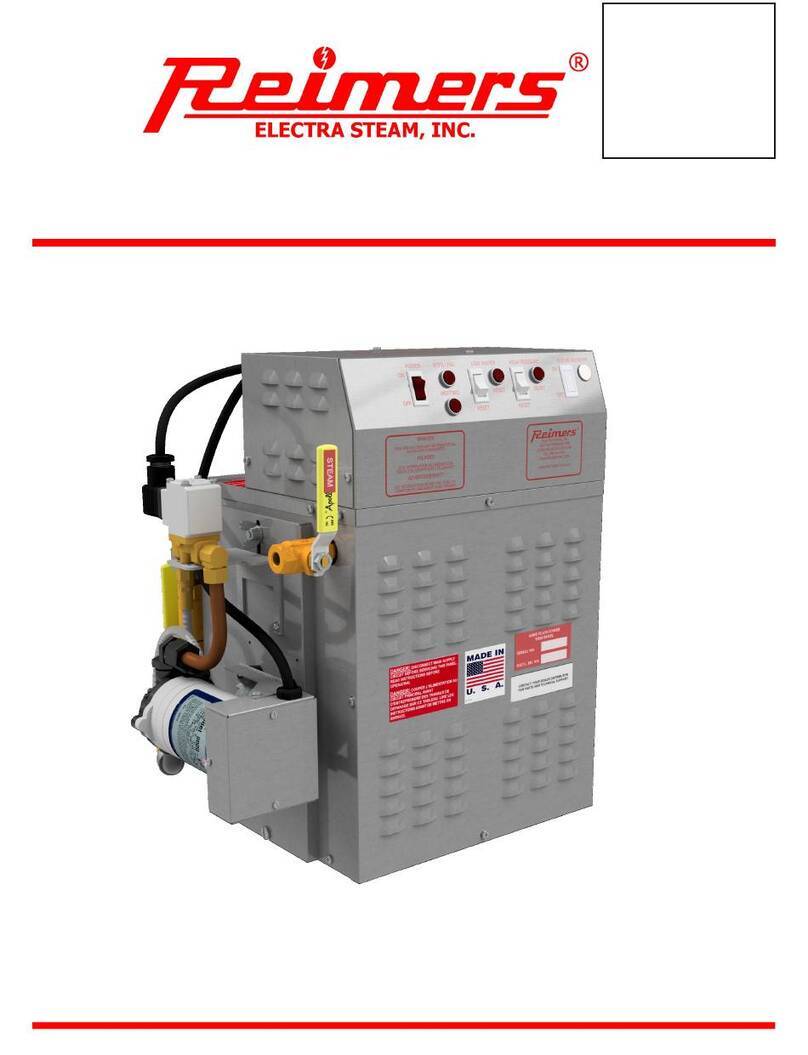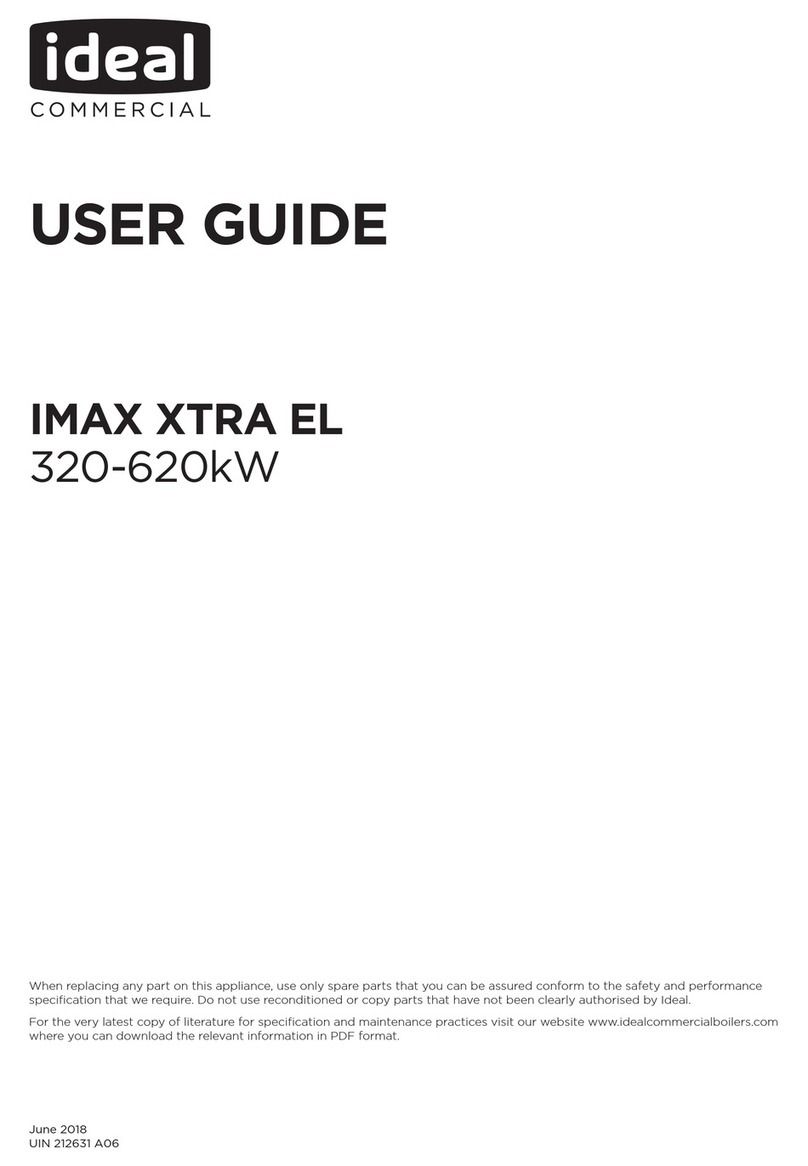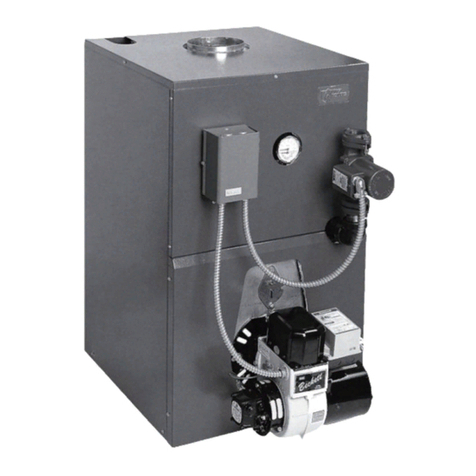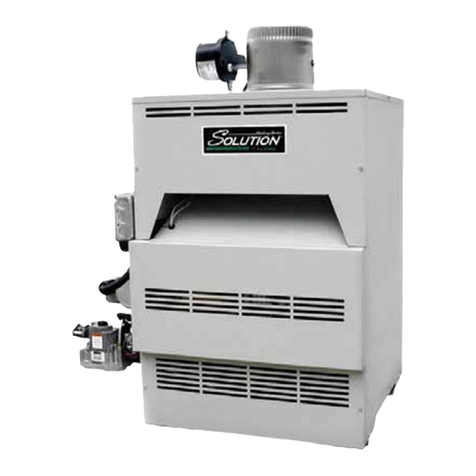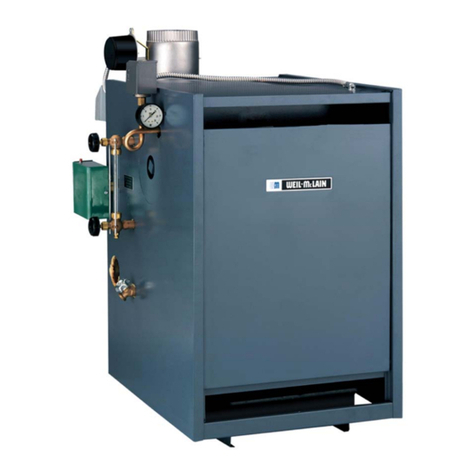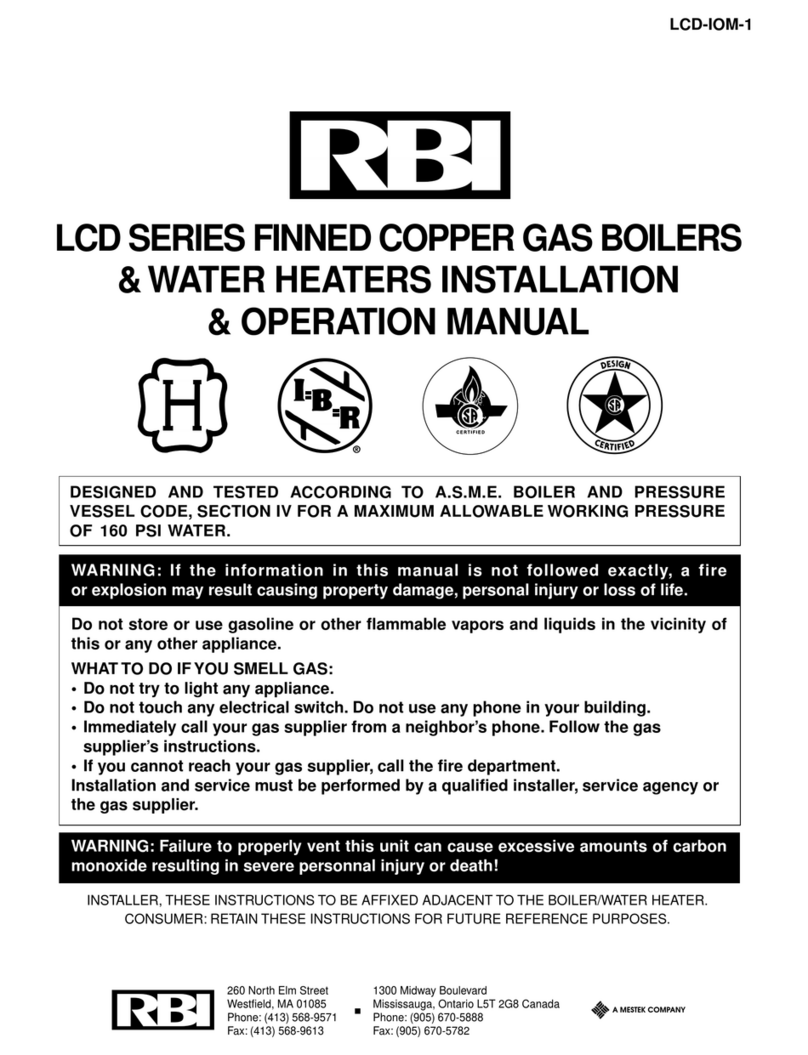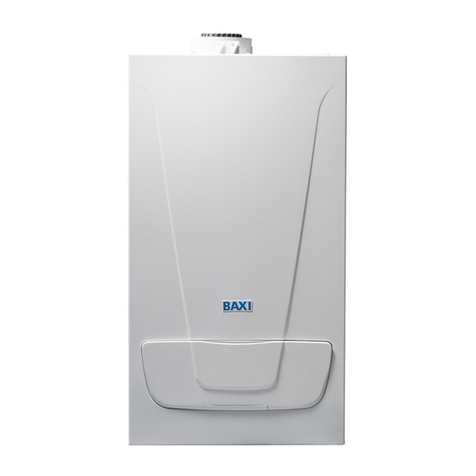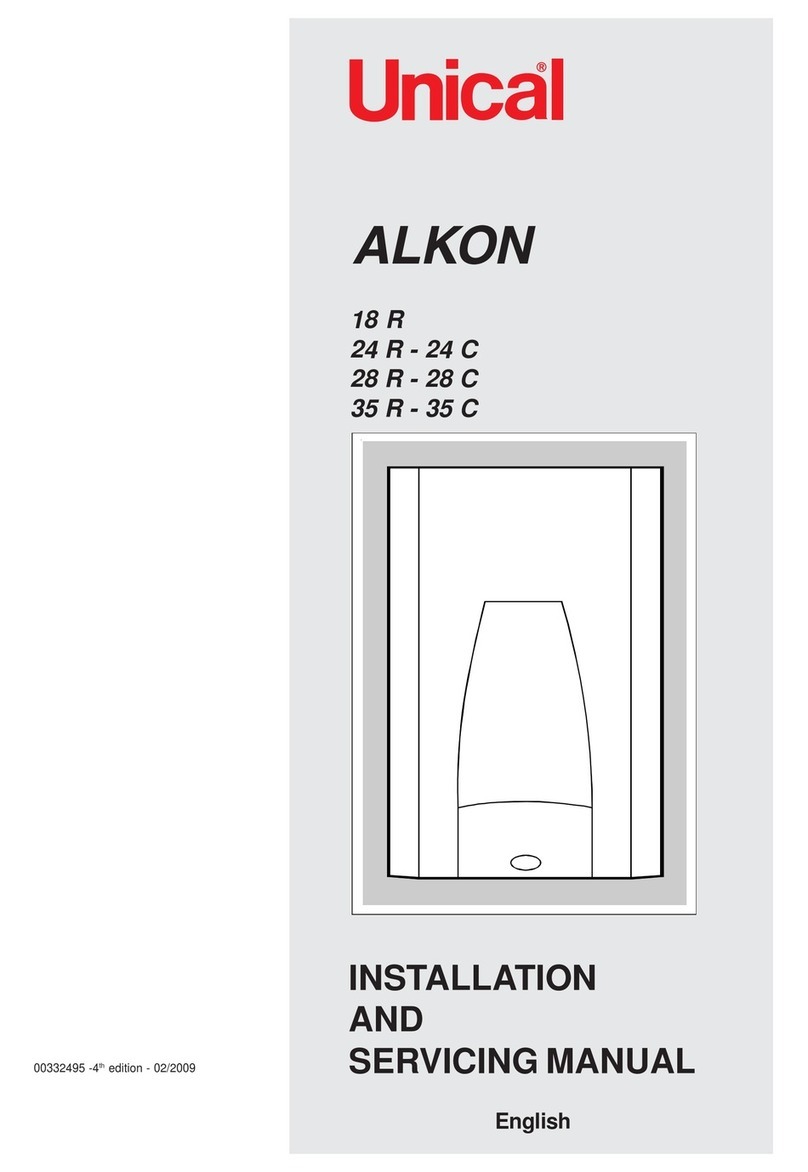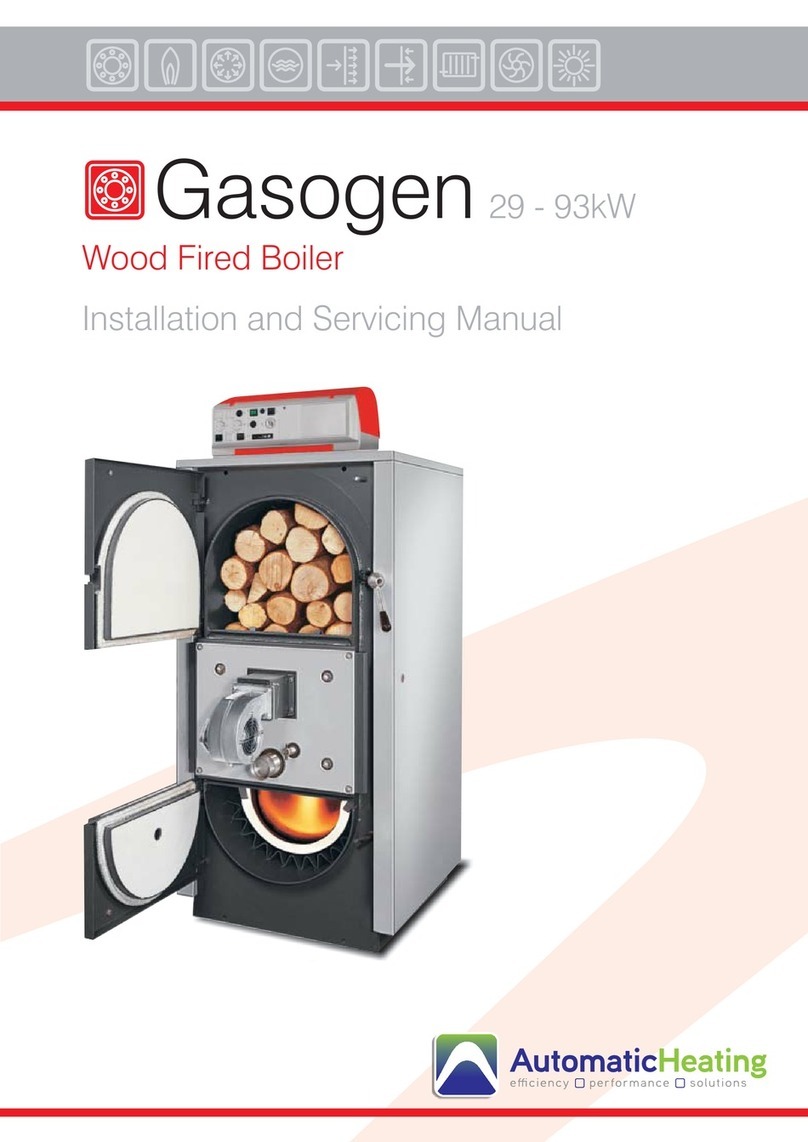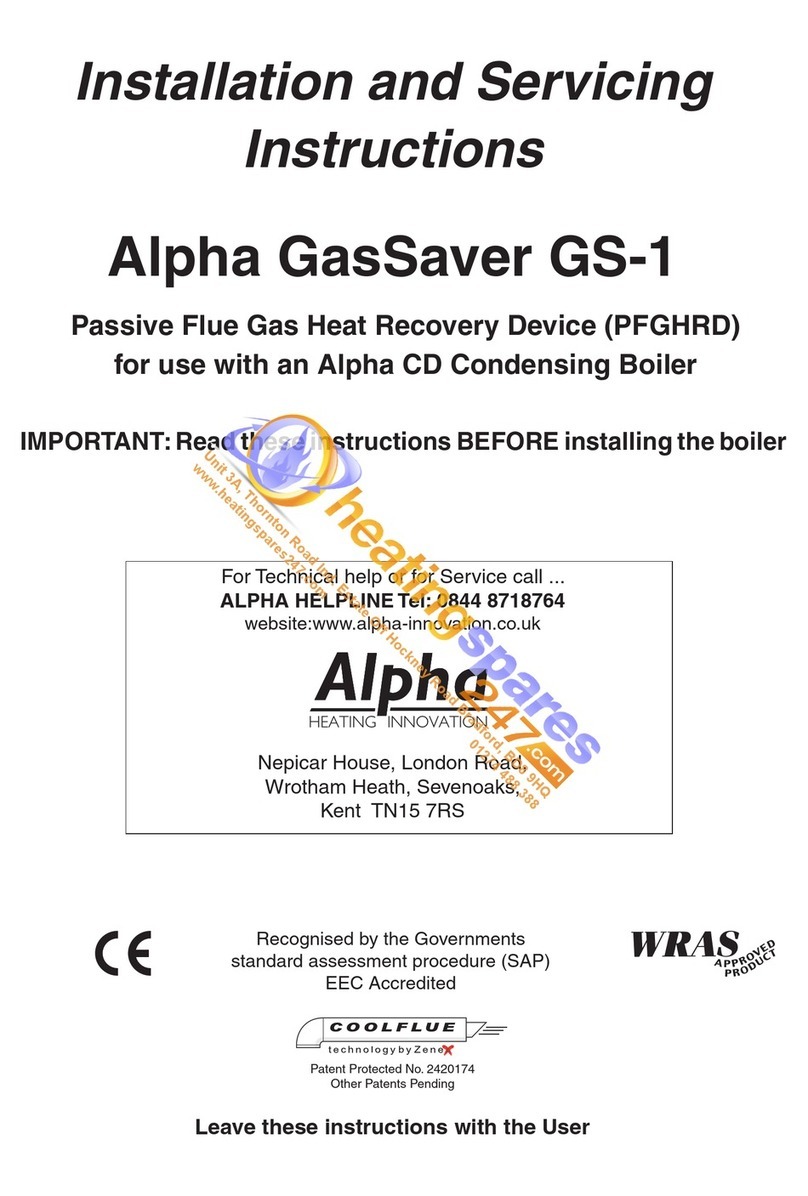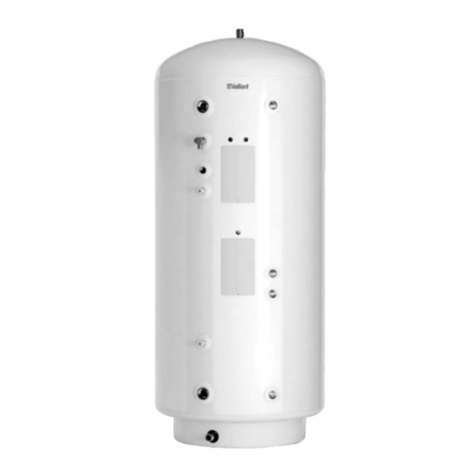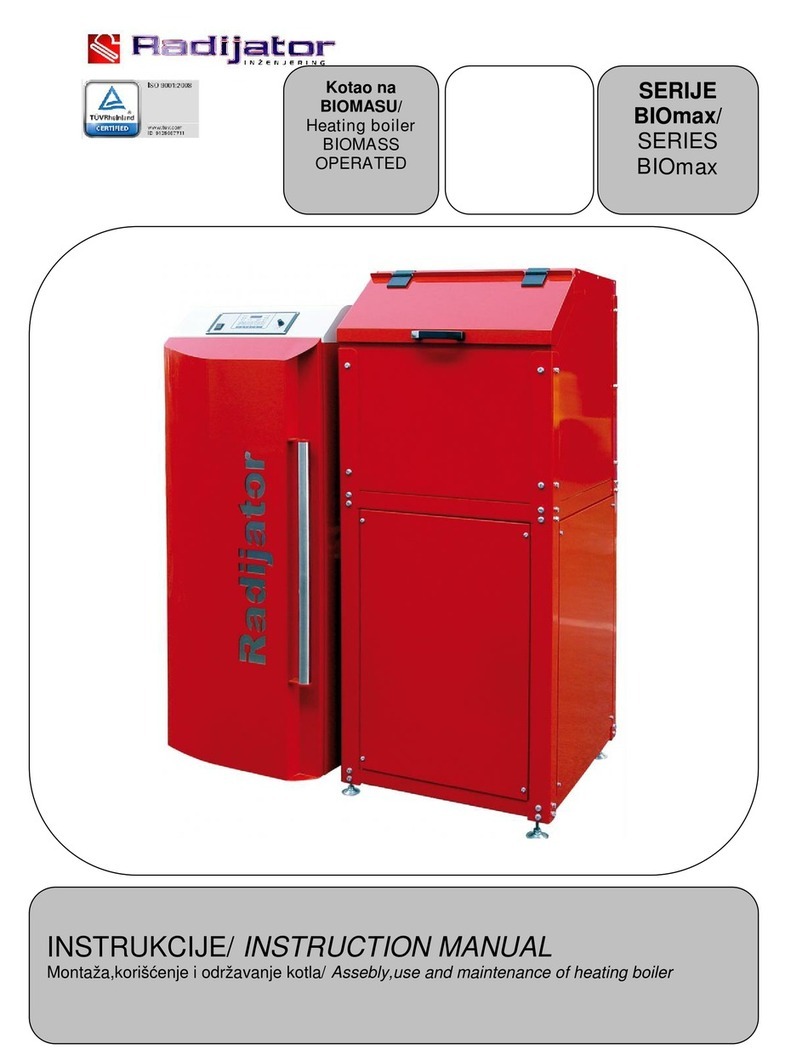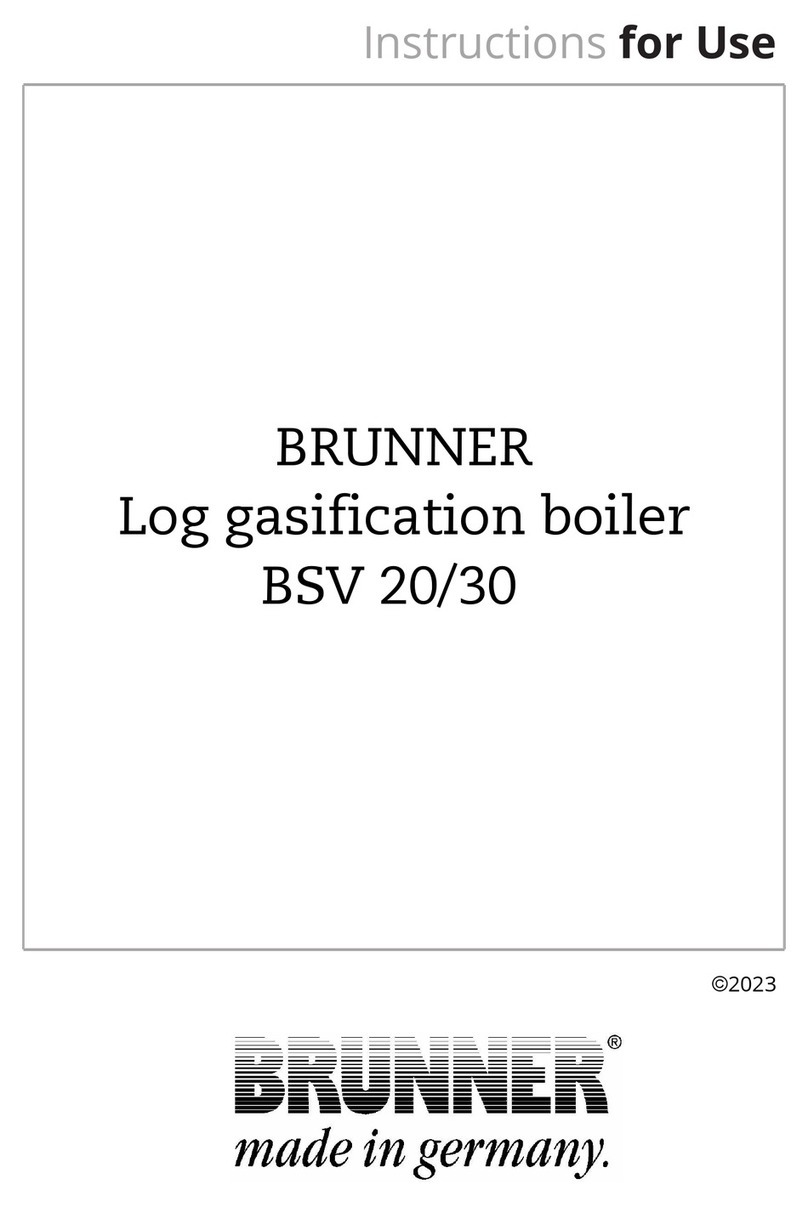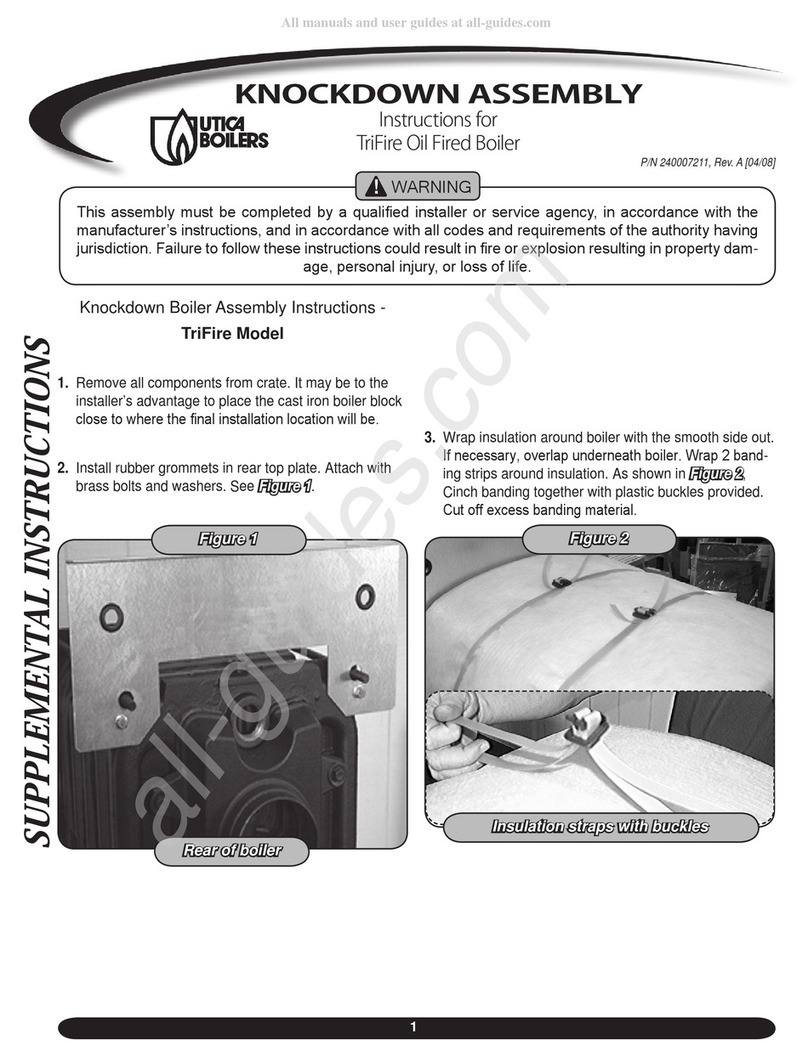
PAGE 8
Reimers Electra Steam, Inc. 04/21/2023 JR06 Manual REV 3
Stand clear of scalding water or steam.
Disconnect the boiler from all power
supplies.
All pressure controls are factory preset and require no
adjustment. However, if a change of the operating steam
pressure is required, then proceed as follows:
• Disconnect all power supplies from the boiler.
• Close the steam outlet valve
• Remove the cover from the pressure control enclosure.
• Turn the black knob of the operating pressure switch
clockwise to increase the pressure and
counterclockwise to decrease the pressure.
• Connect power supply to the boiler, open the steam
outlet valve, and install the pressure control enclosure
cover.
h. To shut off the boiler, turn the POWER switch on the
boiler controller OFF.
All boilers must be blown off periodically to remove
minerals, scale and other foreign matter, which accumulate
inside the pressure vessel. The concentration of this
deposit depends in part upon the condition of the water in
the area. When water is naturally soft, or has been
softened chemically, boiler blowoffs are required less often
than in areas where hard water is found. Water softeners
are suggested in hard water areas to minimize the
formation of hard scale on heating elements. Another factor
affecting water condition is the amount of condensate, if
any, that is being returned to the boiler. Since condensate
is essentially clean distilled water, it contains very few
impurities. If a large part of the condensate is being
returned and little makeup water is used, the boiler need
not be blown down as often as when little or no condensate
is returned to the boiler. We recommend blowoff of newly
installed steam boilers once per day until the first heating
element and pressure vessel inspection is performed (refer
to chapter 3.4). If no significant amount of sediment is
found on the bottom of the pressure vessel and on the
heating element sheaths, then the boiler blowoff frequency
can be reduced accordingly.
Stand clear of safety valve and scalding
steam.
This test should be performed once per month. Proceed as
follows:
• Increase the steam
pressure as shown in
chapter 2.1. to maximum
operating pressure.
• Keep the steam outlet
valve closed
• Pull the trip lever and hold
open for five (5) seconds in
order to flush off the valve
seat.
• Permit the valve to “slap”
shut. If a leak occurs,
repeat this test and if
necessary, replace the valve.
Ensure that the boiler is cold, drained
and all power supplies are
disconnected.
Clean the element rods every six (6) months. To clean the
rods, or if an element must be replaced, proceed as
follows:
• Remove the element terminal cover from the front of the
boiler.
• Disconnect and label the terminal wires
• Remove all four (4) nuts from the element flange and
pull out the heating element.
• Use a stiff wire brush to remove all scale and foreign
matter from the element rods.
• Clean the element flange surfaces before installing new
element and gasket.
Frequency: Minimum once per year.
WARNING Boiler repairs must be
performed by experienced personnel
only. Ensure boiler water is cold and drained and that
there is no pressure and all electricity to the boiler is
shutoff.
WARNING
3. Boiler Maintenance
3.1 Boiler Blowoff
CAUTION
3.2 Safety Valve Test
WARNING
3.3 Element Replacement and Element Cleaning
Element Rods
3.8 Gauge Glass Replacement
Remove gauge
glass protector
rods
Slide glass up,
pull out on
bottom of glass
and remove
Install new glass
by performing
the above
procedur ein
reverse order.
Always install
new rubber
washers.
Step 1 Step 2
Step 3 Step 4
Step 5 Step 6
Remove gauge
glass protector
Close gauge
glass valves
(Top and Bottom)
Loosen nuts at
top and bottom
of glass
Open drain valve
on bottom fixture
to drain glass
WARNING
